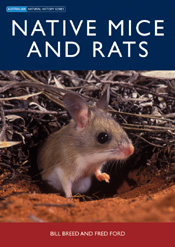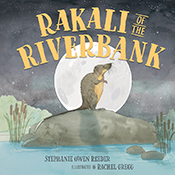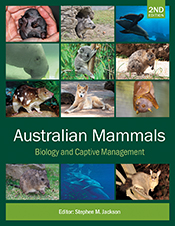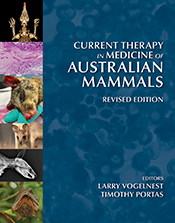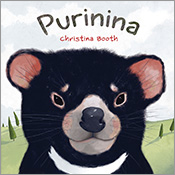Native Mice and Rats
Details the diversity, evolution and ecology of Australia’s native rodents.
Australia’s native rodents are the most ecologically diverse family of Australian mammals. There are about 60 living species – all within the subfamily Murinae – representing around 25 per cent of all species of Australian mammals. They range in size from the very small delicate mouse to the highly specialised, arid-adapted hopping mouse, the large tree rat and the carnivorous water rat. + Full description
Native Mice and Rats describes the evolution and ecology of this much-neglected group of animals. It details the diversity of their reproductive biology, their dietary adaptations and social behaviour. The book also includes information on rodent parasites and diseases, and concludes by outlining the changes in distribution of the various species since the arrival of Europeans as well as current conservation programs.
- Short descriptionNews
No longer available in a print edition.
Reviews
"This book belongs on the shelf of everyone with a serious interest in mammals and in all institutional research libraries, because it brings current nearly all that is known about Australia's native rodents...It is richly illustrated, with informative line drawings by Alice MacDougal, excellent drawings of representative rodents by Ella Fry, colour photographs of 26 extant species by several colleagues of the author and a photocopy of John Gould's 1864 lithograph of the delicate mouse...It leaves to the discerning scholar the revelation of what is still to be learned about this important element of Australia's fauna.
Richard E. MacMillen, Journal of Mammalogy, Vol 91, No 1, 2010
"Breed and Ford provide a tremendous guidebook to the phenotypic variation that has evolved from the radiations of Australian murines… Give this book to your new graduate students looking for an exciting system in which to study ecological diversification… For all the scientists working on Mus and Rattus, this book should be required reading to give them perspective on the broad spectrum of phenotypes that can and have evolved from the common ancestor of Mus, Rattus, and all other murines."
Kevin C. Rowe, Journal of Mammalalian Evolution, Vol 16, 2009
"As most species are quite small and nocturnal, finding enough information for 14 pages on social organisation is definitely laudable. Apart from that, no single chapter shall be mentioned – all are worth reading!"
Udo Ganslosser, Australian Mammalogy Vol 31, 2009
"The coverage of these topics is up-to-date and authoritative and there is a sense that many observations come from the first hand experience of the two authors.
A novel scheme is introduced that places the Old Endemic rodents into a series of informal groups."
Chris Dickman, University of Sydney
Details
ePDF | December 2007ISBN: 9780643095595
Publisher: CSIRO Publishing
Available from eRetailers
Features
- The first comprehensive treatment of native rodents for more than 20 years
- Summarises the latest advances in knowledge of Australia's rodents
- Highlights the unique nature of this neglected part of our mammal fauna
- Outlines recent extinctions and present day conservation challenges
- Illustrated with colour photos of most rodent species
Contents
Preface and acknowledgements1 Introduction
2 Diversity
3 Distribution
4 Origins and evolution
5 Reproduction
6 Diet and gastrointestinal tract
7 Populations and communities
8 Social organisation and behaviour
9 Parasites and disease (by Andrew Breed)
10 Conservation
Index
Authors
Bill Breed is an Associate Professor at The University of Adelaide. He has focused his research on the reproductive biology of Australian native mammals, in particular native rodents and dasyurid marsupials. Recently he has extended his studies to include rodents of Asia and Africa.Fred Ford has trapped and studied native rats and mice across much of northern Australia and south-eastern New South Wales. He currently works for the CSIRO Australian National Wildlife Collection.

